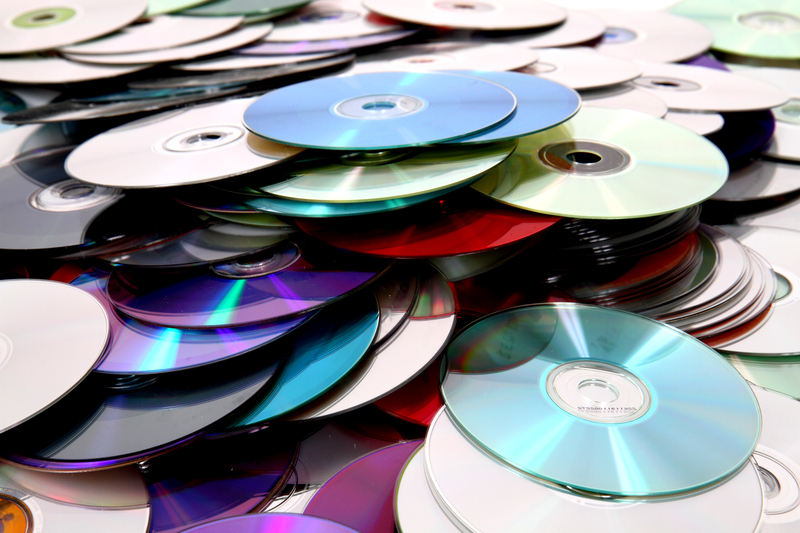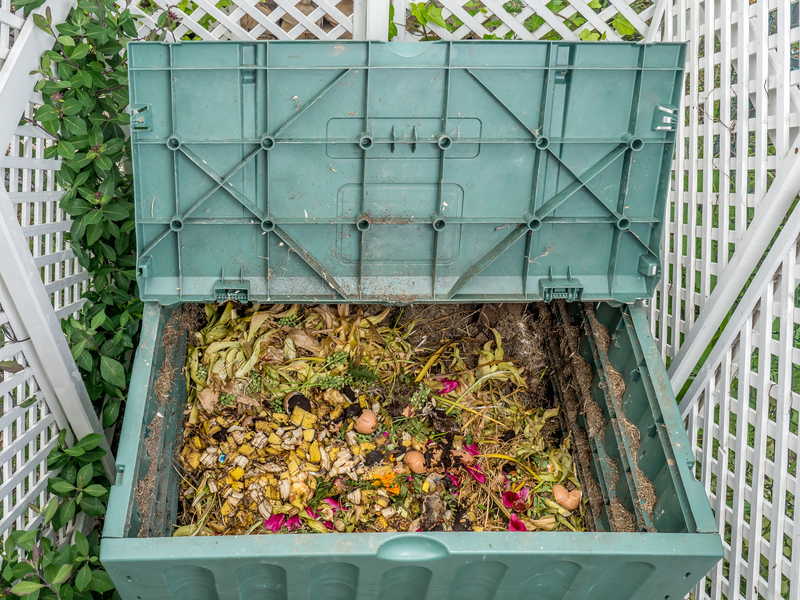Tips for Safely Disposing of Damaged or Worn-Out Pots and Pans
Are your kitchen cabinets overflowing with unusable cookware? Disposing of old pots and pans can seem simple, but not all methods are safe for you or the environment. Many types of cookware contain metals or coatings that require special care, and the wrong disposal method can send valuable materials to the landfill. In this comprehensive guide, we'll explore environmentally friendly, safe, and creative solutions for disposing of damaged or worn-out pots and pans.
Why Proper Disposal of Old Cookware Matters
Throwing worn out pans and pots in the trash is easy but not always safe or earth-friendly. Modern cookware is often made from metals like aluminum, stainless steel, or cast iron, sometimes with chemical nonstick coatings. These materials
- Can take centuries to break down in a landfill
- May leach harmful substances into the soil and water, especially if the nonstick coatings are degraded or scratched
- Could be recycled or reused, saving resources and reducing pollution
Proper disposal ensures materials are handled responsibly, reducing environmental impact and sometimes even supporting your local community. Next, we'll discuss your best options for getting rid of unusable cookware.

How to Decide If Cookware is Truly Beyond Use
Before you dispose of your old pots and pans, consider whether they're actually unusable. Ask yourself:
- Are there deep cracks, warping, or holes?
- Is the handle missing or dangerously loose?
- Has nonstick coating begun to flake, peel, or show significant scratch marks?
- Is rust severe or not easily remedied?
If your item checks these boxes, it may indeed be time to let it go. If issues are minor, some types of cookware can be restored or repurposed--scroll on for creative ideas!
Safe and Responsible Ways to Dispose of Old Cookware
1. Recycle Old Pots and Pans (The Greenest Option)
Metal pots and pans are great candidates for recycling. Most are made from recyclable metals like stainless steel, cast iron, or aluminum.
- Remove plastic or rubber parts: Take off lids, knobs, or handles that aren't metal. These parts usually go in the trash.
- Check your local recycling program: Not all curbside pickups accept cookware. Visit your municipality's website or recycling centers to confirm.
- Find scrap metal drop-off points: Heavy-duty scrap metal yards almost always accept old pans, even nonstick or damaged ones.
If you're recycling nonstick cookware, check if the facility can handle PTFE/Teflon coatings. Many only recycle plain metals.
2. Donate Usable Pots and Pans
If your cookware isn't badly damaged, consider giving it a second life. Donation is an excellent environmentally friendly way to dispose pots and pans.
- Local charities and thrift stores often accept gently used cookware
- Shelters and community kitchens may need pans, even if they're a little scratched
- Students, neighbors, or new homeowners might appreciate free kitchenware
Before donating, wash and inspect items--most organizations won't accept cracked, broken, or missing-part pieces.
3. Upcycle or Repurpose Old Cookware
Sometimes a pan is too worn for food, but perfect for creative reuse. Here are ways to upcycle and repurpose:
- Turn pans into planters for herbs, flowers, or succulents
- Use pots for art supply storage, tool buckets, or even candle molds
- Decorate with paint or mosaic tiles to create garden art or wind chimes
- Craft a birdbath from a shallow pan or lid
Not only does this save landfill space, but it sparks creativity around your home or garden!
4. Scrap Metal Collection Events
Many communities host annual scrap collection events or offer bulk pickup for metal goods. This is an easy, safe way to dispose of damaged pots and pans.
- Research event schedules on local government or community websites
- Prepare items by removing food residue and any non-metal components
- Load them up according to event instructions for pickup or drop-off
5. Manufacturer Take-Back Initiatives
A growing number of cookware manufacturers care about sustainability and offer take-back recycling programs.
- Contact the brand: Major brands sometimes collect old pots and pans for recycling. Reach out through their websites to ask.
- Request a shipping label: Some offer free or discounted shipping for returns.
- Ensure proper handling: Manufacturers will recycle or responsibly dispose of all components, even the difficult-to-handle nonstick coatings.
Special Considerations: Teflon, Ceramic, and Glass Cookware
Disposing of Nonstick Cookware (Teflon/PTFE)
Nonstick pans (Teflon or PTFE-coated) are convenient but need extra care when they're damaged. Flaking or peeling coatings may release harmful chemicals if not handled correctly.
- Never burn or incinerate Teflon pans--harmful fumes may result
- Contact your recycling center: Some accept PTFE for hazardous waste recycling, while others can only handle the metal base
- Manufacturer take-back: Preferred for full material recovery and safety
Ceramic, Glass, and Enamel Cookware Disposal Tips
- Ceramic, glass, or enameled pans are generally not recyclable in curbside bins
- Broken pieces should be safely wrapped (in newspaper or bubble wrap) before disposal with household garbage, as these materials can be sharp.
- Consider upcycling: Use broken ceramics for mosaic projects or garden edging
- Check specialty recycling centers: Some large cities offer drop-off for ceramics or pyrex glass
Never place broken glass or ceramic in your recycling bin unless your provider specifically accepts it--it can damage equipment and contaminate other recyclables.
Sustainable Disposal for Every Type of Pot and Pan
Let's break down disposal options by common cookware types:
- Stainless Steel: Great for metal recycling. Remove plastic/rubber and wash first.
- Aluminum: Accepted at scrap yards. Verify if your local recycling accepts it curbside.
- Cast Iron: Can be recycled, donated, or restored--even rusty cast iron can often be saved!
- Nonstick: Scrap yard or manufacturer take-back, due to coating concerns.
- Copper: Valued at scrap yards--ensure you remove handles or wood before bringing in.
- Glass or Ceramic: Upcycle, donate (if usable), or wrap and dispose in trash.
- Enamel Coated: Treat like ceramics--wrap sharp pieces, or see if a scrap yard accepts the item.
What Not to Do When Disposing of Cookware
It's just as important to know what not to do when disposing of disused cookware:
- Do not recycle pans with food residue. It contaminates recycling streams--always clean thoroughly.
- Do not put non-recyclable pans in curbside bins unless your program specifically states it's acceptable.
- Do not throw large quantities of metal in your residential trash bin. Many areas limit the weight or size of metal items in landfill waste.
- Do not discard potentially hazardous materials (such as flaking nonstick coating) in community compost or open burning.

Frequently Asked Questions (FAQs) About Cookware Disposal
Can I put my pots and pans in the recycling bin?
Rarely. Most curbside recycling programs do not accept pots and pans due to size, shape, and material coatings. Check with your city or take to a scrap yard instead.
Are metal scrap yards safe for all old cookware?
For the most part, yes! Scrap yards accept most metals: iron, steel, copper, and aluminum pots and pans are all welcome. For items with plastic/rubber handles, try to remove those first.
What about nonstick or ceramic pans?
Recycle metal parts at a scrap yard, but some coatings must be handled as hazardous waste. Ask your local recycling facility or manufacturer. Ceramic pans must go to specialty centers or in the trash, not regular recycling bins.
Is it safe to give away scratched nonstick pans?
Not always. Damaged nonstick coatings can flake into food and may be linked to health risks. Donate only if the coating is intact, and warn recipients about careful use.
Can old pans be repaired or restored?
Sometimes! Cast iron can almost always be re-seasoned and reused. Stainless steel pans with minor dents might be salvageable. Nonstick pans with peeling surfaces should not be repaired for food use.
Conclusion: The Importance of Mindful Cookware Disposal
Many households accumulate stacks of unusable cookware over the years. Whether you're making space for new pieces or decluttering, it's crucial to dispose of worn-out pots and pans responsibly. By recycling, donating, or upcycling whenever possible, you not only protect the environment but can spark creativity and support your community. Next time you clean your cabinets, remember these tips for safe and sustainable cookware disposal--you'll make a real difference!
Quick Checklist for Disposing of Old Cookware
- Clean and inspect for potential reuse or donation
- Remove plastic, rubber, or wooden parts for recycling
- Consult local recycling or scrap facilities for metal pans
- Research take-back or special disposal programs for nonstick or ceramic
- Consider creative upcycling for decorative or garden uses
- Farm out usable cookware to family, friends, or charities
By disposing of your old kitchenware responsibly, you're taking an important step toward a greener, cleaner home and planet. Happy decluttering!
